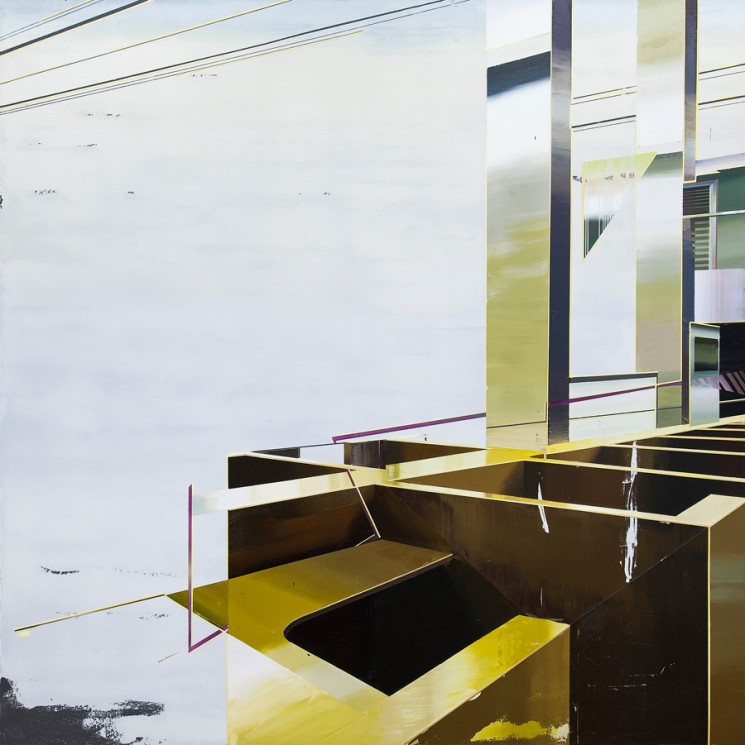Cui Jie
Office

“With globalization, though, the whole concept of so-called “Chinese characteristics” has been blurred. But even though I don’t emphasize them, there are definitely some Chinese “symbols” that I’ve been exposed. But whether these symbols come out in my work is something the audience needs to decide.”
Cui Jie (born in 1983 in Shanghai) belongs to a young generation of Chinese painters, which clearly emancipated themselves from the past and the dominating painting styles of the last decades. After graduating from the China Academy of Art in Hangzhou, Cui rapidly gained popularity due to works which question our seemingly objective perception of reality: astronauts marching through the Forbidden City, beauty queens gathering for a photo shoot on the moon. Her style of painting is dominated by a colour palette that can almost be described as dulcet and a rather impasto style.
In her more recent works she turns to a less playful style and rather subtle tones. Influenced by Orson Well‘s films, among others, her figurative works focus on the relationship between space and figure. In a second group of works she reduces the subject to deserted cityscapes, which seem strange and familiar at the same time.
Cui’s works are exhibited worldwide, including: “Face”, Minsheng Art Museum, Shanghai (2012), 4th Prague Biennal, Czech Republic (2009), “Poetic Realism: An Reinterpretation of Jiangnan – Contemporary Art from South China”, ”Centro de Arte Tomás y Valiente”, Madrid, Spain (2008), “Notes of Conception”, Iberia Center for Contemporary Art, Beijing, China (2008).
The 2012 work “Office” captures the spectator already due to its impressive size of 180 x 180cm. Applying the technique of layer painting and using the classic medium of oil paint on canvas Cui achieves to, at the same time, create a radiant, shimmering surface, and depth of the painting which reveals the underlying layers at certain areas.
The painting presents a spatial structure, which is divided by different architectural elements such as columns or cubes which appear to be wooden. In the background a door becomes visible that seems to lead to a back room. A second floor can also be recognized although it is only shown fragmentarily. The image is dominated by an abstract grey space, which takes over almost half of the painting. The impression of an empty, seemingly deserted space is created, which, due to the interplay of abstract and concrete form elements in the end remains undefined.
Cui deliberately uses the fragmented. She evokes familiar associations in her urban landscapes. At the same time her scenarios seem to be mysterious and almost disconcerting. Cui creates a feeling of rootlessness, which seems to be prevailing in so many Chinese cities. According to the critic Gu Ling, “Cui Jie uses painting to connect the alienation people feel in relation to one another with the alienation they feel in relation to the city. And in these multi-perspective spaces, she parses out the true sense of human and material existence”.